
The Ultimate Guide To Spot Free Car Washing Systems
March 4, 2022 2:00 pm Leave your thoughts
Australia is a car-proud nation. We love fine tuning the performance of our vehicles and keeping them in top shape through regular washing and detailing.
When it comes to cleaning your pride and joy, it’s important to understand that the quality of the materials you use matters.
Poor quality foam sponges or cheap car shampoos can be ineffective and may even cause damage to your paint job.
The same goes for the water you use to wash your car. If you are using water that contains dirt, algae, rust, harsh chemicals, and other contaminants, it will be much harder to clean your car.
Some of these contaminants can even increase the risk of your paint being damaged during the washing process.
If you are using water that is high in mineral content, you may run the risk of leaving water spots on your car’s paint job. Water that is acidic or high in chemical content can cause paint etching. Both issues can ruin the look of your beloved vehicle and lead to expensive paint repairs.
The simplest way to avoid these types of problems is by filtering the water you are going to use on your car. In this guide, I’ll explain how spot free car washing systems work and why every car lover should have one.
If you already understand the benefits of spot free car washing systems, jump straight to the section on The Best Spot Free Car Washing Systems.
Products featured in this guide:
Contents
What Are Water Spots?
What Causes Paint Etching?
How To Prevent Water Spots and Paint Etching
Pros and Cons Of Using A Spot Free Car Washing System
The Best De-ionising Water Filters For Car Washing
Frequently Asked Questions
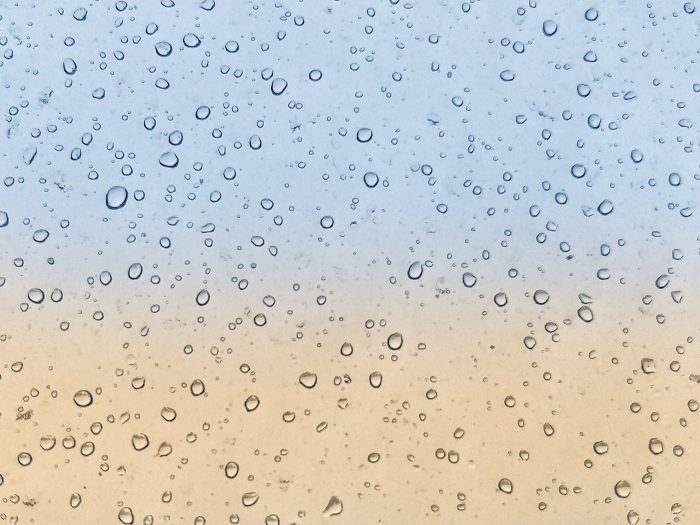
What Are Water Spots?
Water spots are the little circular dots that can be left on your car after you leave water droplets to dry on it. They can ruin the appearance of your vehicle’s paintwork and can eventually cause permanent damage.
These tiny spots are actually little deposits of minerals and metals that were present in the water supply as dissolved solids. There are several types of dissolved solids commonly found in Australian water supplies including:
- Calcium carbonates
- Magnesium
- Aluminium
- Sodium
- Colloidal iron
- Manganese oxides and carbonates
- Nitrates
- Silica
- Phosphates
The amount of dissolved solids is measured in parts per million and referred to as Total Dissolved Solids (TDS). The higher the TDS, the higher the level of dissolved solids (including minerals) in your water.
A TDS of 0 means there are no dissolved solids present and water spots will not form after you leave water on your car to dry.
The TDS of Australian town water is usually somewhere between 50ppm to 1,000ppm. This means using town water on your vehicle and allowing it to dry virtually guarantees you will have water spots.
Even rain water can cause water spots, despite it having an extremely low TDS. That’s because rain drops will mix with dust and other contaminants that are already present on your paint, leaving spots behind as it dries.
If you leave water spots on your car for a long time, the sun will eventually bake them onto the surface of the paint. At this point, they will be very difficult to remove and you may need to employ a professional car detailer to treat your paint.

What Is Paint Etching?
When mineral deposits and chemical contaminants are left on a vehicle’s paint for a long period, they can begin to have a corrosive effect.
This corrosive effect can cause microscopic craters to develop in the clear coat or top paint layer of your vehicle’s paint job. These craters will attract more water, causing the accumulation of even more contaminants which further deepens the indentations.
After several months, this can cause a serious amount of damage to your vehicle’s paint job and ruin its appearance.
Fixing paint etching is not an easy job. It usually requires heavy compounding or sanding, which is best performed by a professional car detailer or body shop.
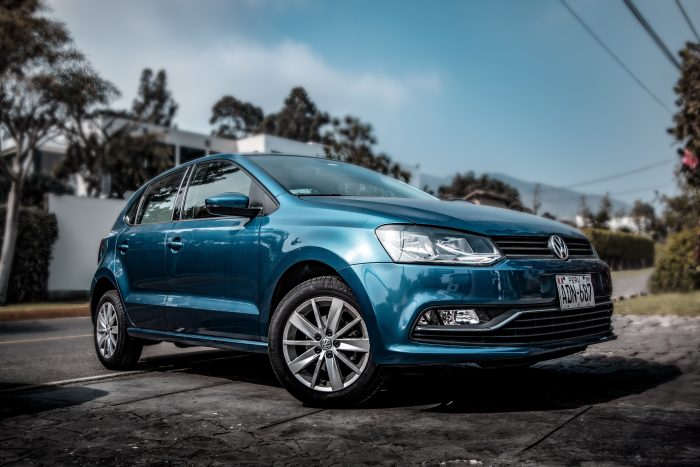
How To Prevent Water Spots and Paint Etching
There are a few strategies available for preventing water spots and etching:
Hand Drying With Microfiber Cloths
One simple way to avoid water spots is to hand dry your car using clean microfibre cloths. The cloths will absorb any water droplets on the car, along with the contaminants they contain.
Because the contaminants never get a chance to dry on your car, your paintjob will be protected from damage.
Unfortunately, hand drying is a very tedious and labour-intensive job. It can take anywhere between 10 to 20 minutes to fully dry the average car.
If you have a busy lifestyle or are working as a professional car detailer, you may not have the time to hand dry.
When hand drying a car, it’s also easy to miss some areas. If you don’t dry every nook and cranny, water may sit on the car and cause water spots or chemical etching.
Distilled Water
Distilled water is water that has been boiled into a vapor then condensed back into liquid form.
The distillation process removes all soluble minerals (calcium, magnesium, phosphorous etc) and dangerous heavy metals (lead, arsenic, and mercury etc). However, it won’t remove all chemicals, as certain chemicals can be transferred as a vapour.
Because distilled water is extremely low in total dissolved solids, the evaporated water droplets shouldn’t leave water spots on your vehicle.
The main issue with using distilled water is that it is expensive, especially considering you may need a lot to rinse your car off. You can make distilled water yourself, but that will require time, equipment, and fuel.
Even if you use distilled bottle water, it will not be completely free of total dissolved solids. Most distilled water still contains somewhere between 0.5 and 5 parts per million TDS.
De-ionising Water Filter For Car Washing
A more cost-effective option for spot free car washing is to use a de-ionising water filtration system.
These systems use a combination of carbon filtration and an ion-exchange resin to capture dissolved solids and chemicals in your water — protecting your vehicle from damage. It is a two-stage process:
Stage 1: Carbon Filtration
A high flow carbon filter is used to reduce chlorine, sediment, metal particles, and harsh chemicals in the water. Most systems will use a filter with a 5-10 micron rating as it still allows for sufficient water flow for a pressure sprayer or hose.
This stage is critical as it reduces chlorine, which can damage ion exchange resin.
Stage 2: Ion Exchange Filtration
Stage 2 is a vessel holding ion exchange resin. Ion exchange resin is bead-like substance made from an organic polymer substrate.
The resin beads are porous, providing a large surface area with tiny cracks capable of trapping and releasing ions (particles, atoms or molecules with a net electrical charge).
Ion exchange resin is extremely effective at trapping contaminants like magnesium and calcium carbonate, which are primarily responsible for water spot formation.
The resin will exchange the magnesium and calcium ions found in hard water for sodium ions, which are harmless to your vehicle’s paint work.
Ion exchange resins can remove all TDS from water, ensuring a spot free wash every time. However, as the resin gradually fills up with contaminants, it will begin to release TDS back into the water. That is why regular testing of your water using a TDS metre is advised.
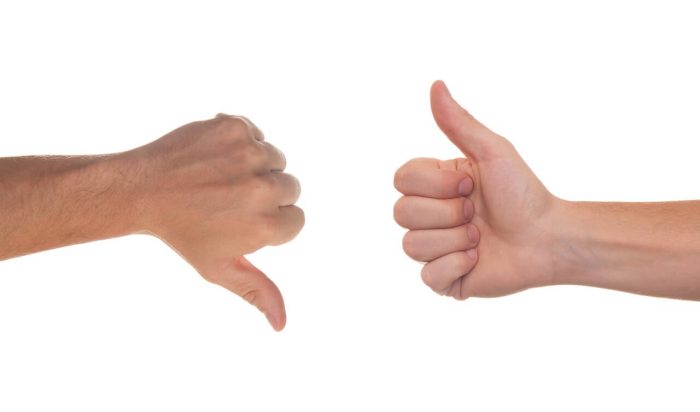
Pros and Cons Of Using A De-ionising Water Filter For Spot Free Car Washing
Just like any technology, there are a unique set of pros and cons to using spot free car washing systems. Here they are:
Pros of Using A De-ionising Water Filter For Car Washing
Removes 100% of TDS
A de-ionising water filter with fresh resin can remove 100% of the TDS in your water. This includes calcium, phosphorous, magnesium, and other common dissolved solids.
It also removes chemicals which could potentially damage your paint job, including toxic petrochemicals. Once these contaminants are removed, there is no chance of water spots or chemical etching occurring.
Leave Your Car To Dry
When using water that is 0% TDS you can let it air dry. This makes cleaning your vehicles much easier, as you avoid the labour intensive step of hand drying. You will save many hours of work each year and won’t need to buy as many microfibre cloths.
Affordable
In the long run, using a spot free car washing system will be much cheaper than buying distilled water. It’s also cheaper than hand drying, if you place any value on your time.
Replacement resin and carbon water filters are inexpensive and only need to be replaced every 12 months (can vary based on water usage and TDS levels).
Does Not Involve The Use Of Chemicals
There are no petrochemicals or synthetic chemical additives used in spot free car washing systems. That means you are doing yourself and the planet a favour.
Simple to use
Although the concept of ion exchange is quite scientific, using a spot free car washing system couldn’t be simpler. All you need to do is wash your car as normal, then use the spot free system for your final rinse. It couldn’t be easier.
Keep Your Car In Great Condition
Using a spot free car washing system makes washing your car much easier. This means you will be more likely to wash your car regularly, which will help to keep it in pristine condition. This will also help you avoid the risk of paint etching from leaving water spots on your vehicle for weeks at a time.
Useful For Other Purposes
You can use a spot free car wash system to generate extremely pure water for many other purposes, including:
- Creating drinking water
- Spot free window washing
- Topping up car batteries
- Filling up fish tanks
A Great Selling Point
If you are a professional car detailer, you can promote the fact you use a spot free car washing system to your clients. They will appreciate the fact that the water you use is 100% safe.
Cons of Using A De-ionising Water Filter For Car Washing
Cannot Be Left To Dry In The Sun
Even when using de-ionised water, you can’t leave a car to dry in the sun, as it can cause streaks. You will still need to wash your vehicles under cover or when the sun is low in the sky.
The Effectiveness Of Resin Declines Over Time
The resin inside of your spot free car washing system will gradually become saturated with contaminants. This will slowly reduce its ability to remove dissolved solids, so your TDS levels will begin to increase again and this will vary depending on your local water conditions. If you have high TDs levels you will need to replace the resin more regular then someone using soft or low TDS water.
The rate that TDS are re-introduced to the water is typically very slow. However, its recommended that you use a TDS metre to monitor your water and ensure the level of dissolved solids don’t get too high for your application.
Although this is as simple as dipping a hand held TDS meter into some water, you need to remember to check it.
Flow Rates Are Limited
The resin in demineralising car wash systems needs plenty of contact time to work effectively. This means you need very large systems to support fast flow rates.
Vessels containing 7kg (12.5L) of mixed bed typically have an ‘ideal’ flow rate of about 6 to 9 litres per minute. This is the level which ensures maximum contaminant removal.
Unfortunately, many commercial pressure sprayers used by professional car detailers can exceed this flow rate.
For this reason, car detailers often use a smaller consumer-level pressure washer with a slower flow rate for their final rinse. This gives the water plenty of contact time to eliminate or significantly reduce your water’s TDS.
Alternately, you could use a hose attachment that lets you run water over the vehicle at a slow flow rate.
Resin Doesn’t Like Hot Environments
The final disadvantage of resin is that it degrades when exposed to high temperatures. If you leave your de-ionizing spot free car washing system next to a heat source or in the sun for long periods, you will notice the resin has a reduced life span.
Our TDS Car Detailing Systems
We sell two spot free car detailing systems which are extremely effective at reducing TDS. Both systems are reasonably priced and simple to use.
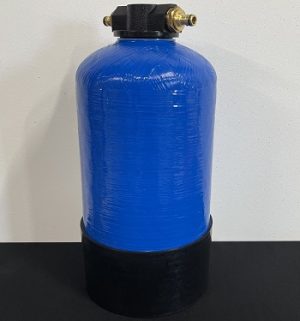
Portable Spot Free TDS Mixed Bed Resin Filter (Model 179TDSPOH)
The 179TDSPOH is a two stage 17″ x 9″ TDS Resin System with click on hose fittings. It is a complete demineralizing spotless rinse water filter which dramatically reduces TDS. It is ideal for both professional car detailers and car enthusiasts.
The unit consists of two stages:
Stage 1: AIC-K 5 Micron Carbon Filter
A 5 Micron Granular Activated Carbon filter with KDF Media for high flow and volume. It has three stages:
- 5 Micron Sediment Pad
A sediment pad to reduce sand, silt, dirt, metal particles, and other contaminants found in dirty water. - KDF 55
KDF is a blend of copper and zinc. As oxygenated water flows through this combination of metals, an electrochemical process occurs called reduction/oxidation. This process reduces a range of contaminants including chlorine, lead, and calcium carbonate. - Granular Activated Carbon
Activated carbon will adsorb chemicals in the water, including chlorine, volatile organic compounds, pesticides, pharmaceutical compounds, insecticides, disinfection by-products (trihalomethanes) and more. It is important to remove chemicals from the water as it will protect the mixed bed resin used in stage 2 from damage.
Pressure rated at 125 psi Service life up to 6000 litres of chlorine reducing maximum 12 months depending on water quality.
Stage 2: 17” x 9” Media vessel containing mixed bed resin
The next stage is a 17″ x 9″ (13.2 litre) tank that contains mixed bed ion exchange resin. The resin will exchange dissolved solids for harmless compounds, dramatically reducing the TDS of your water.
The vessel is made from reinforced fiberglass tank with a 2.5″ threaded opening for easy refilling. It has a Polyethylene inner shell for durability and to keep the resin isolated from the tank walls.
The pre-filter and vessel are fitted with standard brass click-on hose fittings making it portable and easy to connect to any garden hose.
The system is supplied with approximately 12.5 litres of Mixed bed resin. An additional 25L bag of resin is available in the product options.
To extend the resin life use unfiltered water on the initial wet down and washing of dirty areas. Then switch over to the TDS free water for your final rinse. This system is designed to be used with a small pressure cleaner that only uses 5-7 Lpm flow rate.
This system can produce superior water compared to bottled grade Distilled Water and even Reverse-Osmosis water which both still have a TDS reading around 5ppm in the bottle. Making this ideal for refilling batteries in machinery and golf carts.
A handheld TDS meter is included in the kit, so you have the ability to test your water quality before and after the system. This helps you identify when the resin has reached its saturation point. For a spot free rinse, the resin is normally replaced when you get a reading of 8-10 ppm (or higher depending on your application).
Refilling the resin is simple. Start by unscrewing the top head. Remove the head and drop tube before dumping out the old resin. Add a couple of litres of water to the vessel, leaving some room for the drop tube. Push the drop tube in and screw up the head. Flush the new resin for a couple of minutes, then you are fine to use it.
The dimensions of this unit are 490 mm high x 235 mm wide excluding hose fittings.
Read more about the Portable Spot Free TDS Mixed Bed Resin Filter.
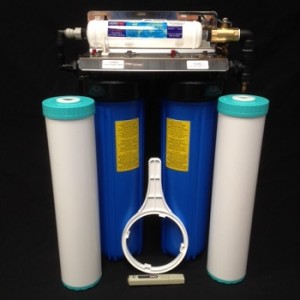
Commercial Car Detailing & Window Cleaning Water Filter (Model T2045TDSRF)
The T2045TDSRF TDS water filter system consists of a Twin Big Blue System Housing on a stainless steel bracket. It is designed to be portable, simple to use, and effective.
This unit features a diverter tap, which allows you to seamlessly switch between unfiltered water for initial washing stages and de-ionized water for the final rinse. This feature makes it easy to preserve your resin by only using it when absolutely necessary.
Stage 1: AIC-K 5 Micron Carbon Filter
A 5 Micron Granular Activated Carbon filter with KDF Media for high flow and volume. It has three stages:
- 5 Micron Sediment Pad
A sediment pad to reduce sand, silt, dirt, metal particles, and other contaminants found in dirty water. - KDF 55
KDF is a blend of copper and zinc. As oxygenated water flows through this combination of metals, an electrochemical process occurs called reduction/oxidation. This process reduces a range of contaminants including chlorine, lead, and calcium carbonate. - Granular Activated Carbon
Activated carbon will adsorb chemicals in the water, including chlorine, volatile organic compounds, pesticides, pharmaceutical compounds, insecticides, disinfection by-products (trihalomethanes) and more. It is important to remove chemicals from the water as it will protect the mixed bed resin used in stage 2 from damage.
Pressure rated at 125 psi Service life up to 6000 litres or 12 months
Stage 2: Twin Big Blue Housing With Refillable Filters
Stage 2 is a high-quality Big Blue Housing System on a stainless steel bracket. Each housing has a refillable 20″ x 4.5″ replacement filter which contains U.S. imported high grade demineralizing resins.
Standard brass click-on hose fittings making it easy to connect to any garden hose. The stainless steel bracket makes it simple to mount the unit on a platform trolley, hand-cart or collapsible trolley, making the unit very portable.
Replacement cartridges can be purchased or you can buy individual bags of resin and refill your own cartridges.
This system is designed to be used with a slow flowing hose or small pressure cleaner that only uses 5-7 Lpm for the final rinse.
This unit produces water superior to Distilled water and even Reverse-Osmosis water, which can still have a TDS reading of 5ppm in the bottle.
A handheld TDS meter is supplied so you can test your water quality before and after the system to indicate when resin has reached its saturation point. Test results on a sample council water supply with a TDS of 72 ppm & pH 6.8 reading before passing through the T2014TDSRF at a flow rate of 20 Lpm consistently showed a 0 ppm TDS reading after filtration.
Capacity and service life of filters varies depending on water supply and use of filter bypass.
A set of flushing instructions are included with the system.
Dimensions are 700 mm high x 510 mm wide including hose fittings.
System is designed as a portable unit with standard click on garden hose fittings of outdoors.
If system is to be plumbed in, please consult with your plumber as some fittings will need to be changed and a PLV valve installed.
Larger systems are available on request.
When purchasing a new system, we offer an extra set of resin refills at a discounted price as an option.
Replacement Components:
- Pre-Filter AIC-K KDF / GAC Filter (re-usable fittings – replace 12 months or as required)
- Stage I TDSR Resin refill TDSR-RR 2.8kg Bag (approximately 3.8L)
- (replace as required)
- Stage II TDSR Resin refill TDSR-RR 2.8kg Bag (approximately 3.8L) (replace as required)
Read more about the Commercial Car Detailing & Window Cleaning Water Filter.
Spot Free Car Washing Frequently Asked Questions
What is Deionized Water?
The terms ‘deionized water’ and ‘demineralized water’ both describe water that has had ions (positively or negatively charged particles) removed. This includes common dissolved solids made from minerals including sodium, calcium, magnesium, and copper.
This form of water is extremely pure and has a zero or very low TDS reading. Because it has had most of its dissolved solids stripped out, it won’t leave any nasty residues on your car which could eat into your clear coat or paintwork.
What’s The Difference Between Distilled and Deionized Water?
Distilled water and deionized water are often confused by the general public. Although they are very similar, deionized water has some important advantages:
- Deionized water can be made on-demand while distillation takes time and a significant amount of energy
- It’s typically much cheaper to use deionized water as resin is quite affordable. Distilled water can be very expensive.
- You can connect a hose or pressure sprayer directly to a deionizing car washing system, which makes it very convenient for car detailing
What Is Mixed Bed Resin?
The ion exchange resins most commonly used in spot free car washing systems are ‘mixed bed’. This means they have a combination ‘anion’ resin and ‘cation’ resin.
Anion exchange resins hold a positive charge, so they will attract and exchange negatively charged contaminants for harmless particles. Cation resins are the opposite, they are negatively charged, so they will attract and exchange positively charged particles.
You can think of cation and anion exchange resins as powerful magnets that capture passing contaminants through electromagnetic attraction.
Mixed bed resins will exchange both positive and negatively charged dissolved solids for harmless de-ionised molecules like sodium and chloride.
Hard water contains a lot of calcium (Ca2+) and magnesium (Mg2+) metal cations. They are primarily responsible for scale formation and cause water spots very quickly. They can be capture by the cation exchange resins.
Mixed bed resin also deals with anions in the water, including bicarbonates (HCO3) and sulphates (SO4), which are attracted to the cation exchange resin beads.
How Long Do You Get Out Of Each Resin Refill?
This will vary based on:
- How much water you put through the unit
- If you by-pass the resin system to wash down and only use TDS water as the final rinse.
- The TDS level of your water
- How you care for your resin (temperature)
- How high you are willing to let TDS get before changing your resin
Every-day consumers who clean a couple of cars each week and have reasonable water quality should easily get over 12 months from their resin. Busy car detailers and people on harsh water might find themselves replacing it more often.
What Flow Rate Can Deionizing Water Systems Handle?
If the flow rate is too fast, more dissolved solids will make it through the system. Fast flow rates can also damage the resin, causing it to wear out prematurely.
Most spot free car washing systems will support a flow rate of between 5-8 litres per minute. That is fine in most cases as the deionized water only need to run at a flow rate fast enough to rinse off contaminated water.
If you want to achieve a faster flow rate, then a larger vessel that contains more resin will be required. Contact us with your requirements and we will help you find a suitable system.
Flow regulators and flow meters can also used to ensure your flow rate doesn’t pass recommended levels.
How Do I Test For TDS?
The simplest method is to use a digital handheld TDS meter. They will accurately measure the Total Dissolved Solids in water at levels between 0 and 999. The spot free car washing systems above both include a TDS meter, so you can test your water as often as you like.
What Is The Simplest Way To Get A Spot Free Car Rinse At Home?
The simplest way to achieve a spot free car rinse at home is to use a portable deionizing water system. They are simple to use and will strip virtually all of the damaging mineral and chemical content from your water supply. They are also very affordable and easy to store.
What Do Car Washes Use For Spot Free Rinse?
Car washes use a variety of approaches to achieve a spot free rinse, including:
- De-ionized water
They are larger scale versions of the systems above, with large vessels containing mixed bed resin to remove TDS. - Reverse osmosis water
Large RO systems are on premises, generating hundreds of litres of low-TDS water per day - Distilled water
Less common due to the cost of the product - Chemicals
Some car washes will offer soaps that are designed to reduce the risk of water spot formation. They are designed to help the water droplets slide off the car after rinsing. They are not very effective.
Wrapping Up
As you can see, there are many advantages to using deionizing car washing systems. If you would like to learn more, give us a call or send an email:
Clarence Water Filters
sales@clarencewaterfilters.com.au
02 6646 8565
Categorised in: Buyer's Guides, Product Features
This post was written by Greg
